so - using Jupyter-lab - create a figure in matplot3d - and out of the box, if I just say "figure" (the name of my figure variable) - it magically renders something - something underneath is turning into a png - which is great
[
the thing is though - I'd like it to be much bigger. And ideally draw lines so I can see the edges of the figure - potentially even have a light source. But the main thing is.... bigger
As much as I google, I can't find anything that controls how big that thing is rendered, or anything else about it, so any help would be appreciated - I keep finding examples of 2d renders, but I can't find much documentation showing Matplotlib can even do 3d, let alone tell me how to control how it does that.